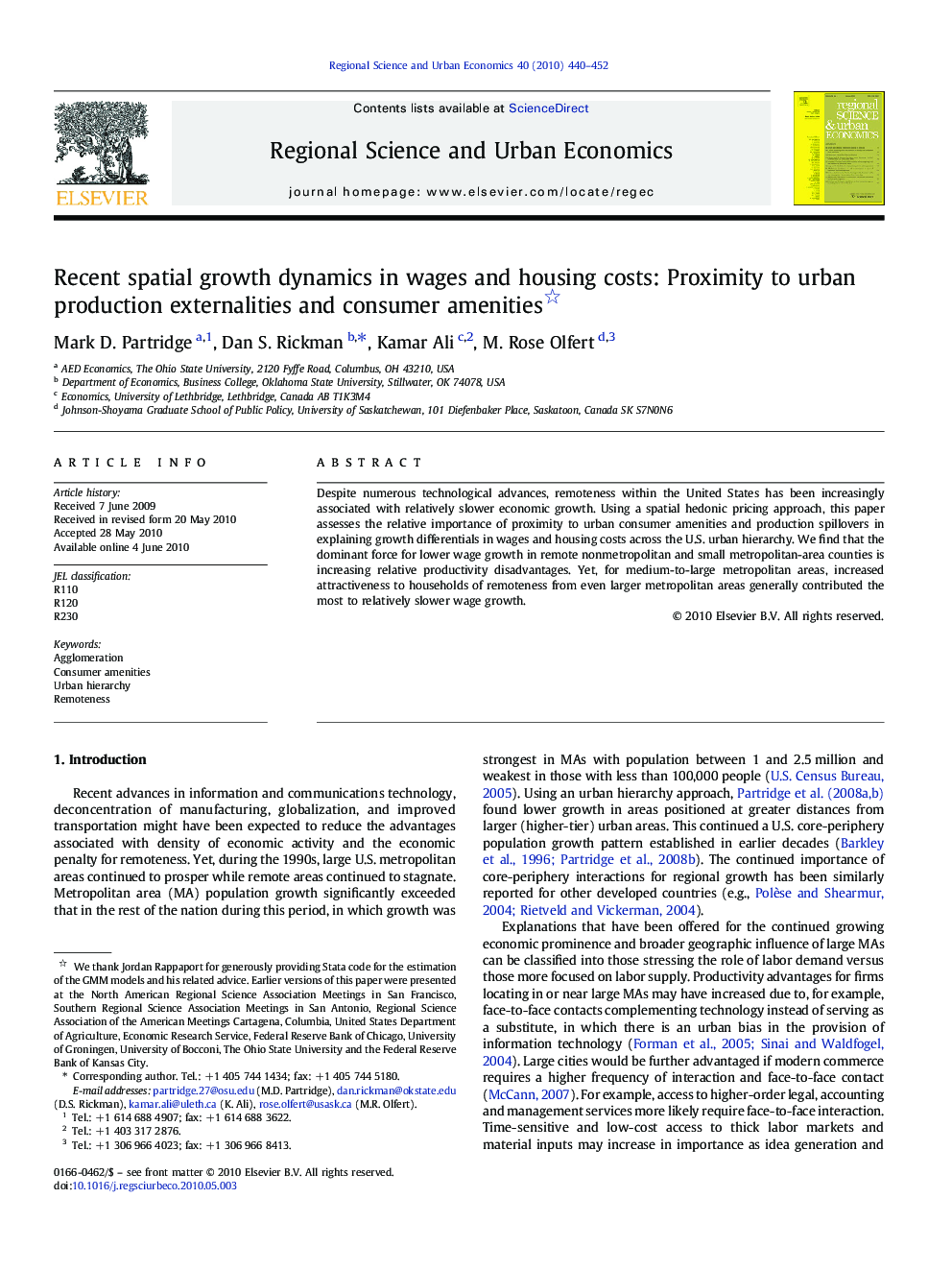| کد مقاله | کد نشریه | سال انتشار | مقاله انگلیسی | نسخه تمام متن |
|---|---|---|---|---|
| 983801 | 1480552 | 2010 | 13 صفحه PDF | دانلود رایگان |

Despite numerous technological advances, remoteness within the United States has been increasingly associated with relatively slower economic growth. Using a spatial hedonic pricing approach, this paper assesses the relative importance of proximity to urban consumer amenities and production spillovers in explaining growth differentials in wages and housing costs across the U.S. urban hierarchy. We find that the dominant force for lower wage growth in remote nonmetropolitan and small metropolitan-area counties is increasing relative productivity disadvantages. Yet, for medium-to-large metropolitan areas, increased attractiveness to households of remoteness from even larger metropolitan areas generally contributed the most to relatively slower wage growth.
Research HighlightsDuring the 1990s economic growth continued to be stronger in, and nearer, urban population centers, suggesting increased penalties for geographic remoteness. This occurred despite numerous technological advances which have often been thought to reduce the economic penalties for geographic remoteness. The primary contribution of this study is an assessment of whether the increased penalties associated with geographic remoteness arose from household versus firm location considerations. We find that the dominant force for lower growth in remote nonmetropolitan and small metropolitan-area counties is increasing relative productivity disadvantages. Yet, for medium-to-large metropolitan areas, increased attractiveness to households of remoteness from even larger metropolitan areas generally is the dominant factor.
Journal: Regional Science and Urban Economics - Volume 40, Issue 6, November 2010, Pages 440–452